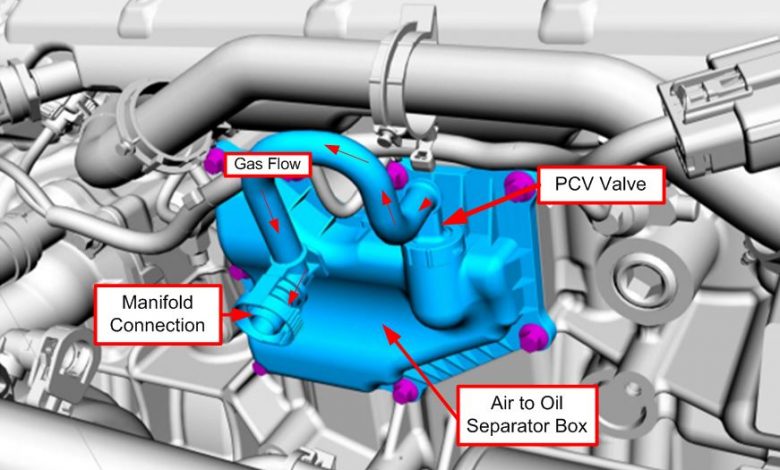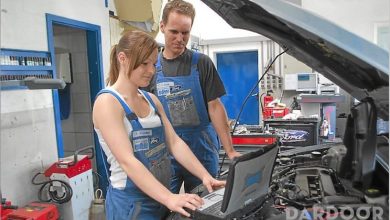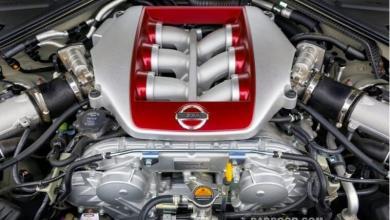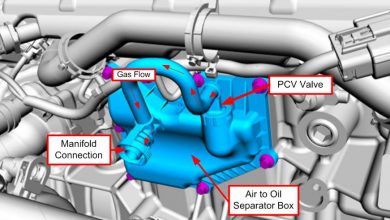
The force or energy from fuel explosion is what powers the engine. But some of the gases from the explosions escape into the lower part of the engine, called the crankcase. The crankcase is where your engine oil sits. These gases are about 70% unburned fuel. If the gases were allowed to stay in the crankcase, they would quickly contaminate the oil and turn it to sludge. Sludge is one of the most influential enemies of the engine, clogging it up, finally leading to expensive breakdowns. Also, the pressure build-up would cause seals and gaskets to blow out. Therefore, these gases need to be released out of the engine.
Gasoline engines used to have a hose that let the toxic fumes vent out into the air. But starting in 1963, laws mandated that these toxic gases be recaptured. Manufacturers began installing PCV systems, which recycled the gases into the air intake system where they could be mixed with fuel and sent to the engine to be burned. However, diesel engines are not required to have these valves.
The Positive Crankcase Ventilation, or PCV, valve routes crankcase vapours through a hose and back into the air intake system where they are re-burned in the engine. Fresh, clean air is brought into the crankcase through a breather tube. It’s really a pretty simple system but does a remarkable job. The re-circulating air removes moisture and combustion waste from the crankcase, preventing sludge. This prolongs not only the life of the oil but the engine as well. The PCV releases pressure in the crankcase and then preventing oil leaks.

Eventually, the PCV valve can get gummed up. Then it can not move enough air through the engine to keep it working efficiently. If the PCV valve is sticking enough, you could have oil leaks, excess oil consumption and a fouled intake system. If you encounter a delay or surging or an oil leak, it may be a sign of PCV value problems. Your Service or owners’ manual may give a recommendation for when the PCV valve should be replaced – usually between 32,000 km and 80,000 km. Unfortunately, some car manufacturers don’t list a recommendation in the manual, so it can be easy to overlook.

Many PCV system problems can be diagnosed with a visual inspection. Fortunately, PCV valve replacement is both quick and cheap. Decent oil changes will greatly increase the life of the PCV valve. Skipping a few recommended oil changes can allow varnish and gum to build up in the valve, reducing its efficiency. So now when your mechanic tells you its time to replace the PCV valve, you will know what he’s talking about. Check the video below to learn more about it.








